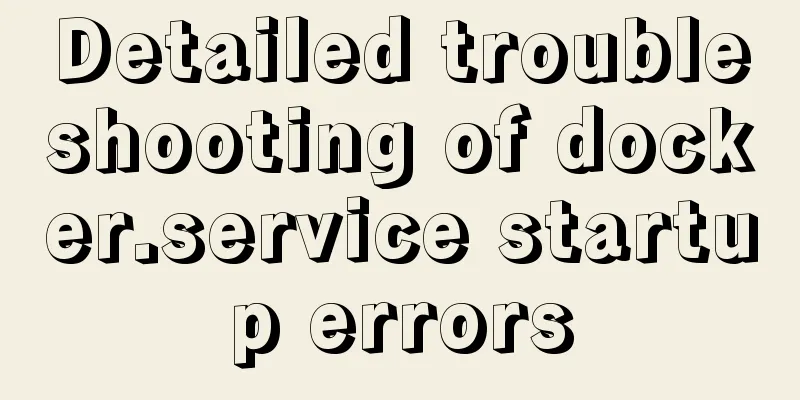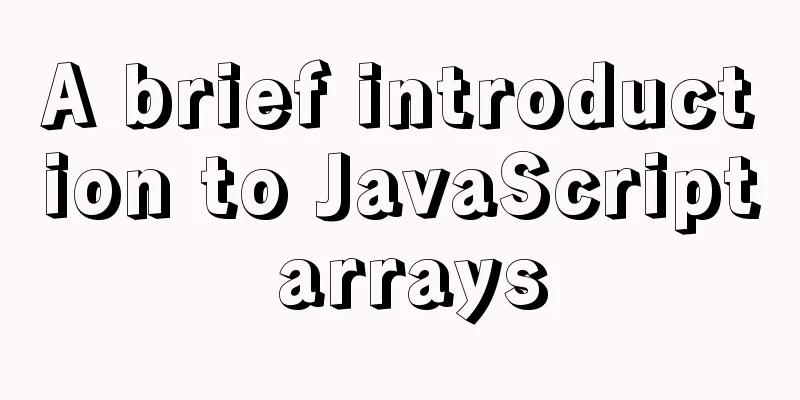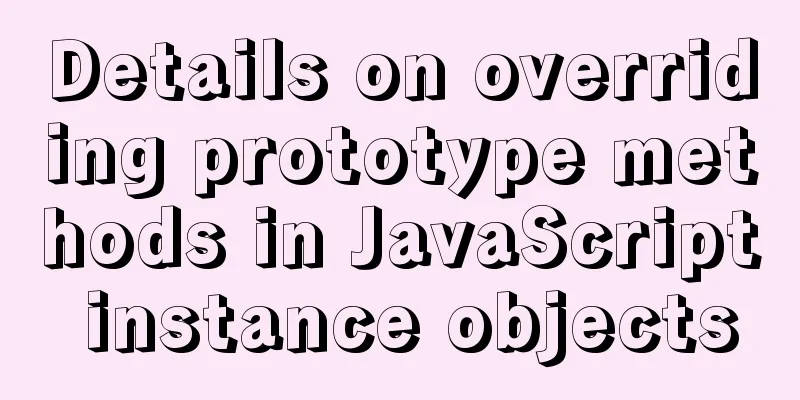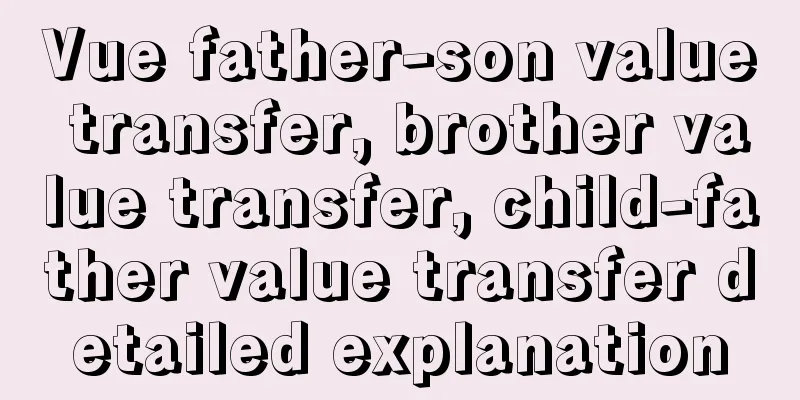HTML drag and drop function implementation code
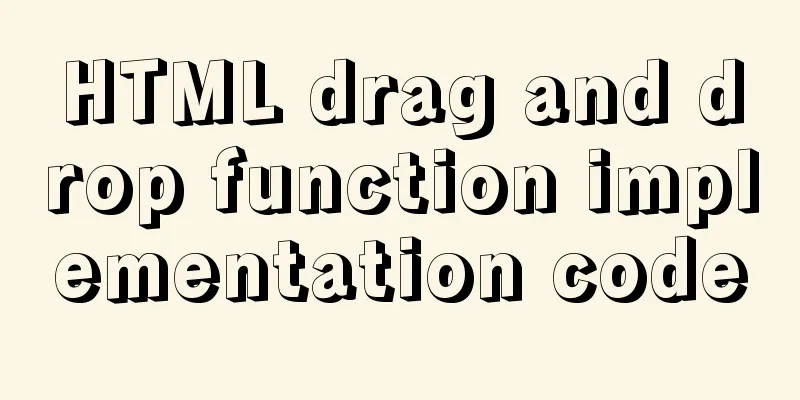
|
Based on Vue The core idea of this function is to control the left and top margins of the node on the page through JavaScript code. Different style positioning methods have different solutions. This solution adopts CSS style core code // Parent container core style width: 100%; height: 100%; //Subcontainer core style position: absolute; top: 50%; left: 50%; transform: translate(-50%,-50%); The parent container occupies the entire visible range of the browser through the JavaScript core code for logic controlFirst, let's break down the steps and corresponding events required to achieve node movement.
As long as you use the three events onMousedown, onMousemove and onMouseup, you can achieve the simplest movement
/*
* Get the top and left position of the child container relative to the parent container when the child container is created */
mounted () {
this.left = this.$refs.fatherBox.offsetLeft
this.top = this.$refs.fatherBox.offsetTop
}
/*
* When the mouse is pressed* 1. Enable the flag that allows child containers to move
* 2. Record the location information when the mouse is clicked*/
mouseDown (e) {
// Set the flag to allow pop-up window to move
this.moveFlag = true
// Save the starting position of the mouse this.startLeft = e.clientX - this.left
this.startTop = e.clientY - this.top
}
/*
* When the mouse moves* 1. Determine whether the flag allows the child container to move* 2. Set the left position of the pop-up box* 3. Set the right position of the pop-up box*/
move (e) {
// Check if flag allows movement if (!this.moveFlag) return
// Set the left position of the bullet box this.left = e.clientX - this.startLeft
// Set the right position of the bullet box this.top = e.clientY - this.startTop
}
/*
* When the mouse button is released* 1. Turn off the flag that allows child containers to move
*/
mouseUp (e) {
this.flag = false
}
Through these methods, you can get the top and left offsets of the mouse when the mouse is pressed and moved. By exposing this offset to the parent component, the parent component sets the top and left values of the child component in real time to make the child container follow the movement of the mouse. Parent component codeThe parent component sets the ref and zIndex values of the child component, and the backValue method of the parent component receives the zIndex value from the child component, and uses the zIndex to identify the specific child component instance.
/*
* Parent component code snippet jsx version */
export default {
props: {
playList: {
type: Array,
required: true
}
},
render () {
return (
<div style={{width: '100%', height: '100%'}} ref={'father'}>
{
this.playList && this.playList.map((item, index) => {
return (
<ChildComponents
key={index}
ref={index}
zIndex={index}
visible={true}
backValue={this.backValue}
info={item}
width={600}
height={400}
/>
)
})
}
</div>
)
},
methods: {
backValue (left, top, zIndex) {
this.$refs[zIndex].$el.style.top = `${top}px`
this.$refs[zIndex].$el.style.left = `${left}px`
}
}
}
<!-- Parent component code snippet vue file version -->
<template>
<div
ref="father"
style"width: 100%, height: 100%"
>
<ChildComponents
v-for="(item, index) in playList"
:key="index"
:ref="index"
:visible="true"
:z-index="index"
:back-value="backValue"
:info="item"
:close="close"
:width="600"
:height="400"
/>
</div>
</template>
<script>
export default {
components:
VideoPlayerModal
},
props: {
playList: {
type: Array,
required: true
}
},
methods: {
backValue (left, top, zIndex) {
this.$refs[zIndex][0].$el.style.top = `${top}px`
this.$refs[zIndex][0].$el.style.left = `${left}px`
}
}
}
</script>Set the fence range of the child componentThis function only needs to determine whether the top and left of the child container are beyond the visible range of the browser in the onmousemove event.
/*
* 1. this.width data is the width value passed in by the parent component, or the default value set by the child component itself* 2. this.height data is the height value passed in by the parent component, or the default value set by the child component itself*/
move (e) {
// Check if flag allows movement if (!this.moveFlag) return
// Determine whether it exceeds the left view if (this.$refs.fatherBox.offsetLeft < this.width / 2) {
// Disable the pop-up box from moving this.moveFlag = false
// Set the left position of the bullet box this.left = this.width / 2 + 10
// Call the callback function to expose the offset to the parent component this.backValue(this.left, this.top, this.zIndex)
return
}
// Determine whether it exceeds the right view if (this.$refs.fatherBox.offsetLeft > document.body.clientWidth - this.width / 2) {
// Disable the pop-up box from moving this.moveFlag = false
// Set the right position of the bullet box this.left = document.body.clientWidth - this.width / 2 - 10
// Call the callback function to expose the offset to the parent component this.backValue(this.left, this.top, this.zIndex)
return
}
// Determine whether it exceeds the top view if (this.$refs.fatherBox.offsetTop < this.height / 2 + 70) {
// Disable the pop-up box from moving this.moveFlag = false
// Set the top position of the bullet box this.top = this.height / 2 + 70 + 10
// Call the callback function to expose the offset to the parent component this.backValue(this.left, this.top, this.zIndex)
return
}
// Determine whether it exceeds the bottom view if (this.$refs.fatherBox.offsetTop > document.body.clientHeight - this.height / 2 - 50) {
// Disable the pop-up box from moving this.moveFlag = false
// Set the bottom position of the bullet box this.top = document.body.clientHeight - this.height / 2 - 50 - 10
// Call the callback function to expose the offset to the parent component this.backValue(this.left, this.top, this.zIndex)
return
}
// Set the left position of the bullet box this.left = e.clientX - this.startLeft
// Set the right position of the bullet box this.top = e.clientY - this.startTop
// Call the callback function to expose the offset to the parent component this.backValue(this.left, this.top, this.zIndex)
}The subcomponent also needs to set an onmouseout event when the mouse exceeds the subcontainer to prevent unexpected bugs.
mouseOut (e) {
this.moveFlag = false
}This is the end of this article about HTML drag-and-drop function. For more relevant HTML drag-and-drop function content, please search 123WORDPRESS.COM’s previous articles or continue to browse the related articles below. I hope everyone will support 123WORDPRESS.COM in the future! |
<<: CSS tips for implementing Chrome tab bar
Recommend
A simple tutorial on how to use the mysql log system
Table of contents Preface 1. Error log 2. Binary ...
Build a server virtual machine in VMware Workstation Pro (graphic tutorial)
The VMware Workstation Pro version I use is: 1. F...
A brief analysis of how to use border and display attributes in CSS
Introduction to border properties border property...
A brief discussion on Yahoo's 35 rules for front-end optimization
Abstract: Whether at work or in an interview, opt...
Detailed explanation of three ways to configure Nginx virtual hosts (based on ports)
Nginx supports three ways to configure virtual ho...
Example code for implementing background transparency and opaque text with CSS3
Recently, I encountered a requirement to display ...
Summary of common commands for building ZooKeeper3.4 middleware under centos7
1. Download and decompress 1. Introduction to Zoo...
React+ts realizes secondary linkage effect
This article shares the specific code of React+ts...
JavaScript web form function communication full of practical information
1. Introduction Earlier we talked about the front...
Vue+Websocket simply implements the chat function
This article shares the specific code of Vue+Webs...
JavaScript to implement simple tab bar switching content bar
This article shares the specific code of JavaScri...
Detailed explanation of the process of installing msf on Linux system
Or write down the installation process yourself! ...
MySQL 8.0.20 Window10 free installation version configuration and Navicat management tutorial graphic detailed explanation
1. Download and decompress MySQL 8.0.20 Download ...
How to backup and restore the mysql database if it is too large
Command: mysqlhotcopy This command will lock the ...
Complete steps to install FFmpeg in CentOS server
Preface The server system environment is: CentOS ...


